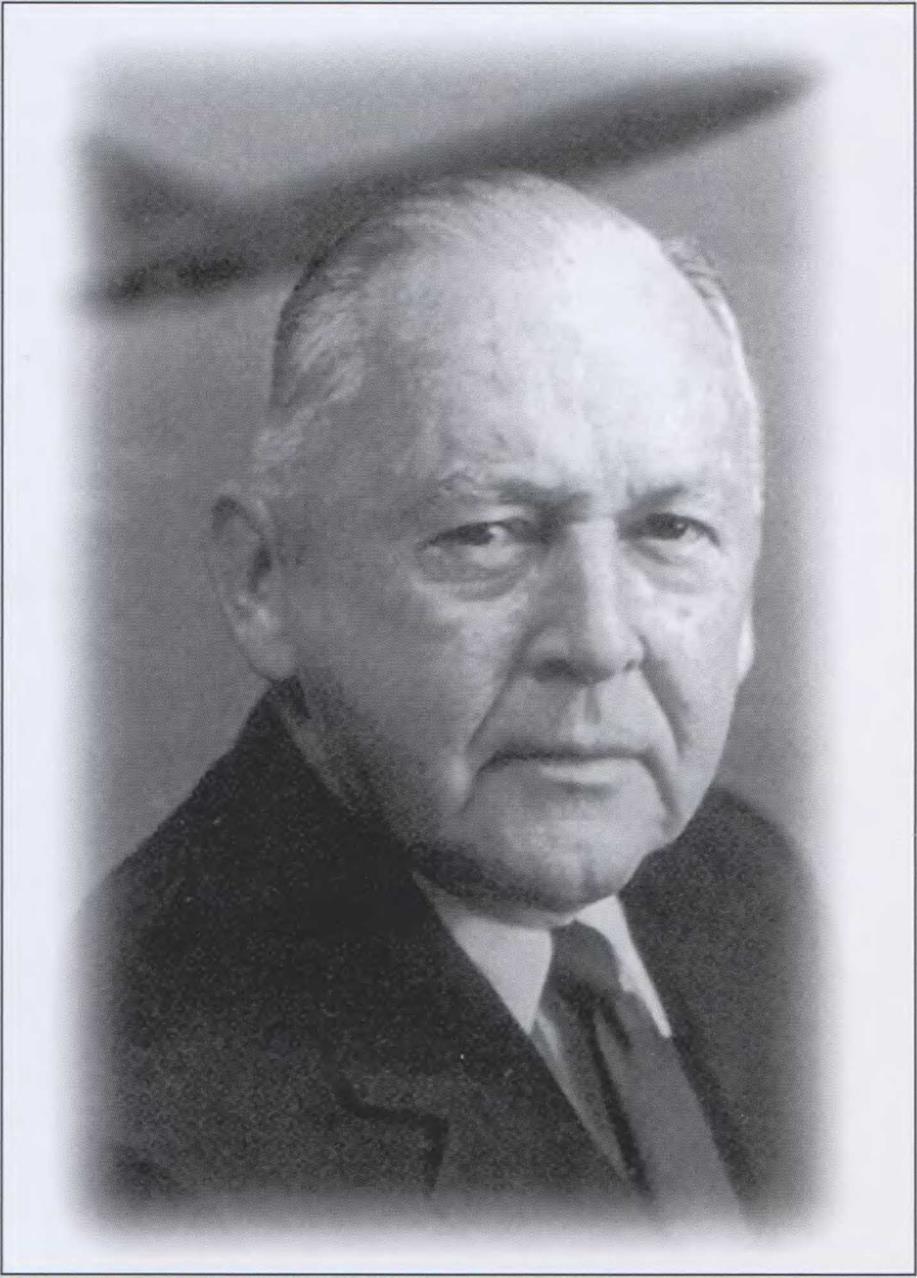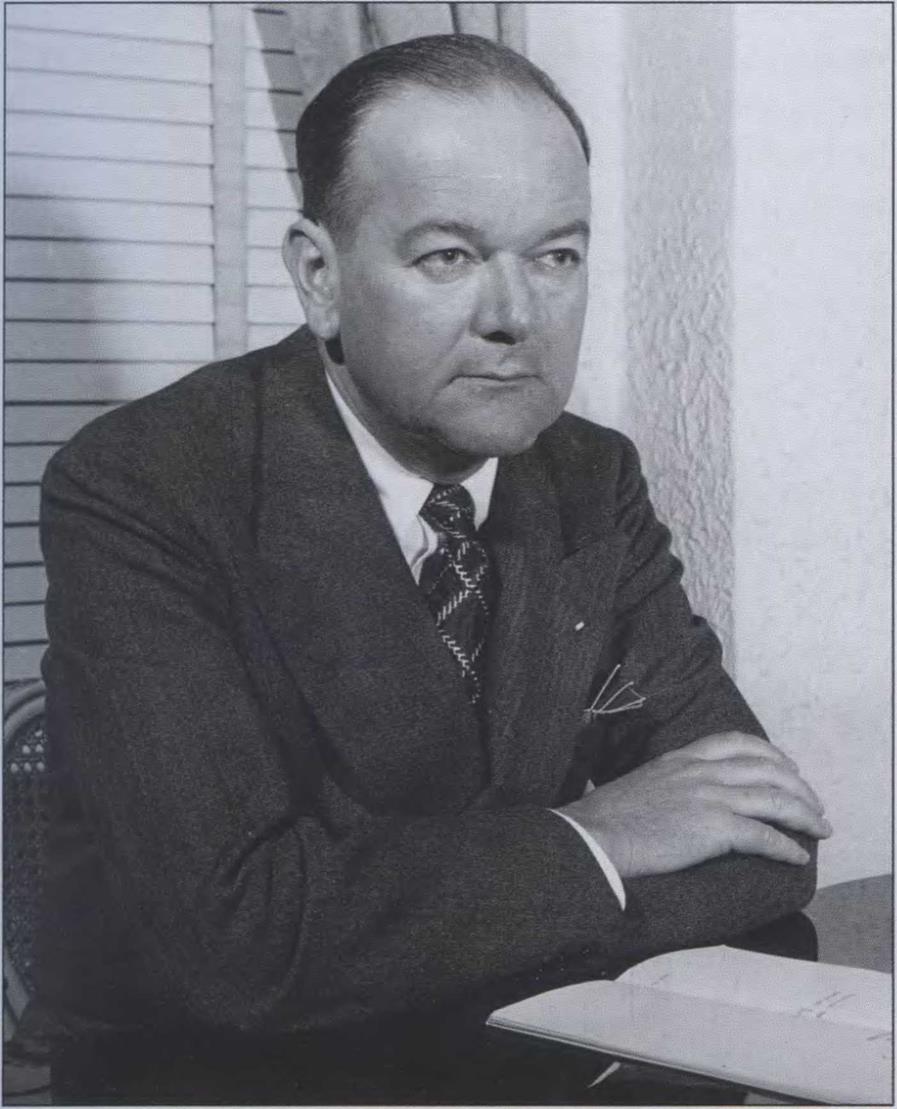THE VISIONARIES
|
T |
hroughout the Industrial Revolution in America, bold, farsighted men carved out a country that flourished beyond their wildest expectations. Midway into the period of American exceptionalism, the fledgling airline industry required, and acquired, men such as those who preceded them: huge dreamers, bold and decisive leaders, the inspirational creators of an entirely new system of transportation. These were the men who didn’t just lead but “became” their own airline companies, and by doing so, gave the world wings. Below are three of many; perhaps the three most influential airline presidents who shepherded into the modern era the airlines they so proudly ran.
W. A. "Pat" Patterson, United
Plucked from Wells Fargo Bank, after being the loan officer in charge of the Pacific Air Transport (PAT) account, William A. “Pat” Patterson was hired by Boeing Air Transport after it bought PAT in 1929. He was placed in the company as general manager under its president at that time, Philip Johnson. Soon thereafter, the presidency became his. Patterson’s tenure at what became United Airlines lasted some 32 years, and at the time of his retirement, United Air Lines was the largest airline in the free world.
Pat Patterson ran United as a very hands-on manager, usually spending one third of his year traveling the routes of the airline so as to keep an eye on its functioning and to meet the employees. He was a legend when it came to remembering names. His administration was one of shared commitment, and he stressed five rules to utilize in everyday airline work life. They were (in order of importance) safety, passenger comfort, dependability, honesty, and sincerity.
Perhaps the biggest early decision Patterson made was in response to the San Francisco Traffic Manager’s suggestion that the airline utilize nurses onboard the airplanes in order to care for the needs of the passengers. Eight young women were hired and became the world’s first professional stewardesses.
Under his watchful eye, other firsts at United included: the first airborne kitchen for inflight meals; the first nighttime scheduled services for coast-to – coast and long-distance routes; and two-way radio communications. This last point also bears on the fact that United had a radio laboratory that also investigated other aspects of advancing flight and aerial nav-
|
United Chairman William A. Patterson was a close friend of Donald Douglas, and was known to order airplanes from "Doug" just by picking up the phone. United flew every major Douglas type, and was a launch customer for several Douglas airliners including the DC-8. (Jon Proctor Collection) |
igation. Additionally, United had a lead role in creating special airfare promotions like taking your wife along for free on your business trip, and men only “executive” service (see Chapter 8 sidebar, “United’s Magnificent Caravelle,” page 122). United also helped refine and then launch the Douglas DC-8 Jetliner.
C. R. Smith, American
Another financial whiz kid, Cyrus Rowlett Smith, or Mr. C. R., or just “C. R.,” was an imposing figure of a man, standing just over six-foot-one-inch tall. A compassionate yet sometimes gruff manager, Smith got things done at American, even though he originally had no interest in running an airline. Once
|
American Airlines’ guiding light throughout the 1930s, 1940s, and 1950s was Cyrus R. Smith, who understood the profound impact air travel would have on National commerce as well as the traveling public. (Craig Kodera Collection) |
selected for the job of running Texas Air Transport, he threw himself into the occupation, going so far as to get his pilot’s license. Once in charge of the entire amalgamated airline after 1934, C. R. made aviation history time and again through American Airlines. He was president from 1934 until 1968.
C. R. was what we call today a workaholic manager, always flying the line and tweaking American’s service and its business. He usually flew anonymously, and on standby at that, with a similar penchant as Patterson for remembering employees names and family details. It wasn’t surprising to see a short letter from C. R. noting a good, or bad, occasion. It was a small aviation world back then.
One indicator of his bravura was the launching of the national ad campaign boldly asking if the average person was afraid to fly. This was the unspoken reality of commercial aviation in the 1920s and 1930s, and C. R. brought it into the open and pointed out that American’s number-one priority was safe transportation in the air. By the end of the 1930s, American was carrying one third of all U. S. airline passengers.
Pioneering “firsts” in the airline industry under C. R. included: first national campaign to sell seats; first credit purchase program; first passenger lounges (Admirals’ Clubs); first airline service into LaGuardia Airport (thus assuring American’s overwhelming presence), first transcontinental jet service; first stewardess college; and the first airline to carry one million passengers during a year (1937). American also helped pioneer the VOR (Visual Omni Range) system of navigation, today’s staple. It caused the launch of many significant airliners including the Convair 240 and 990; the Lockheed Electra (see Chapter 4); and the Douglas DC-6, DC-7, and DC-10.
As impressive as these achievements may have been, perhaps the most significant action ever taken by C. R. Smith was his insistence, during a marathon two-hour phone call, that Don Douglas build a larger DC-2 derivative called the Douglas Sleeper Transport, which became better known as the DC-3. From that point on, the world of transport aviation was never the same, and by 1936, airlines were finally showing a profit carrying only passengers, and not having to depend on U. S. Mail contracts.












